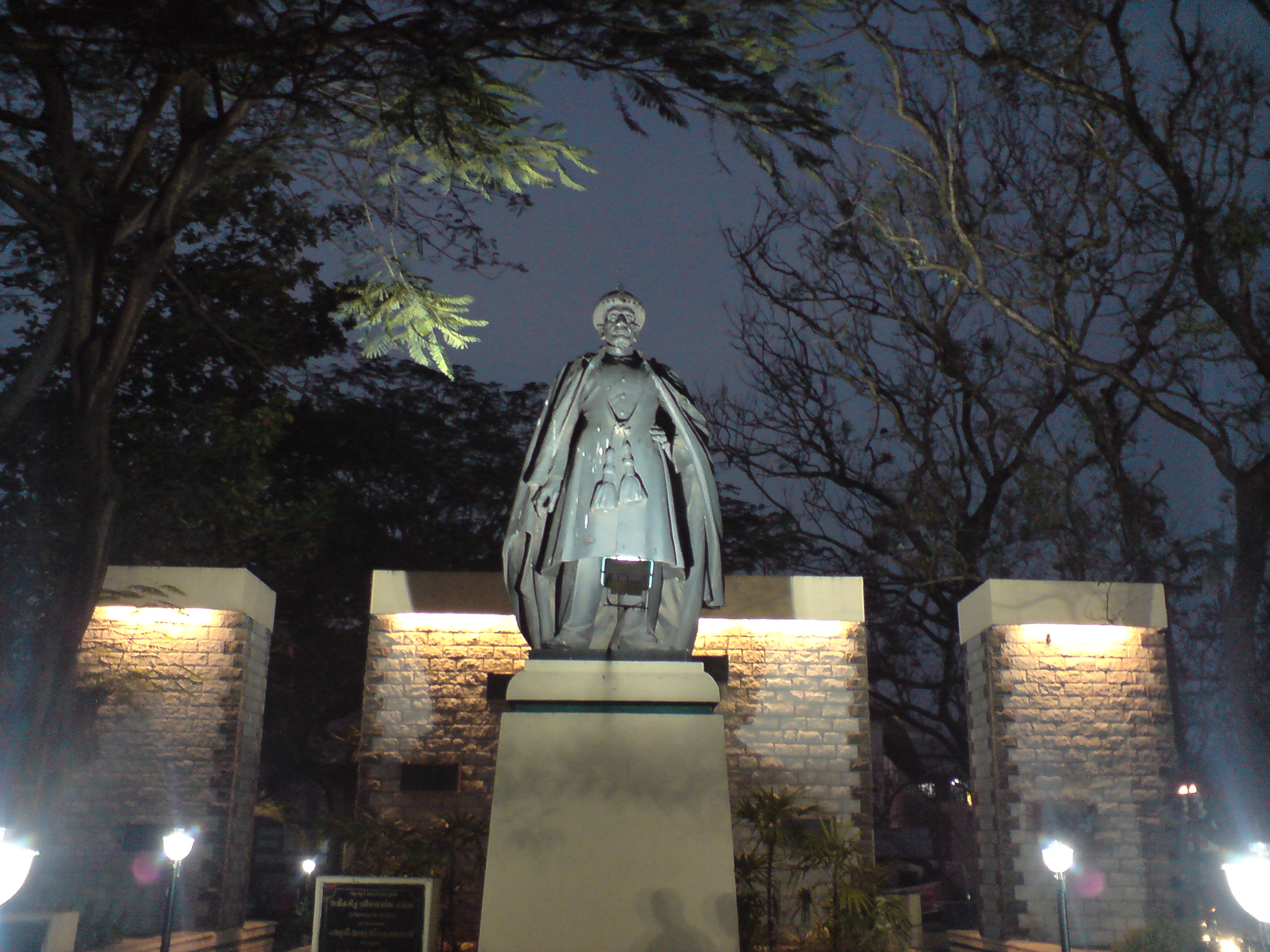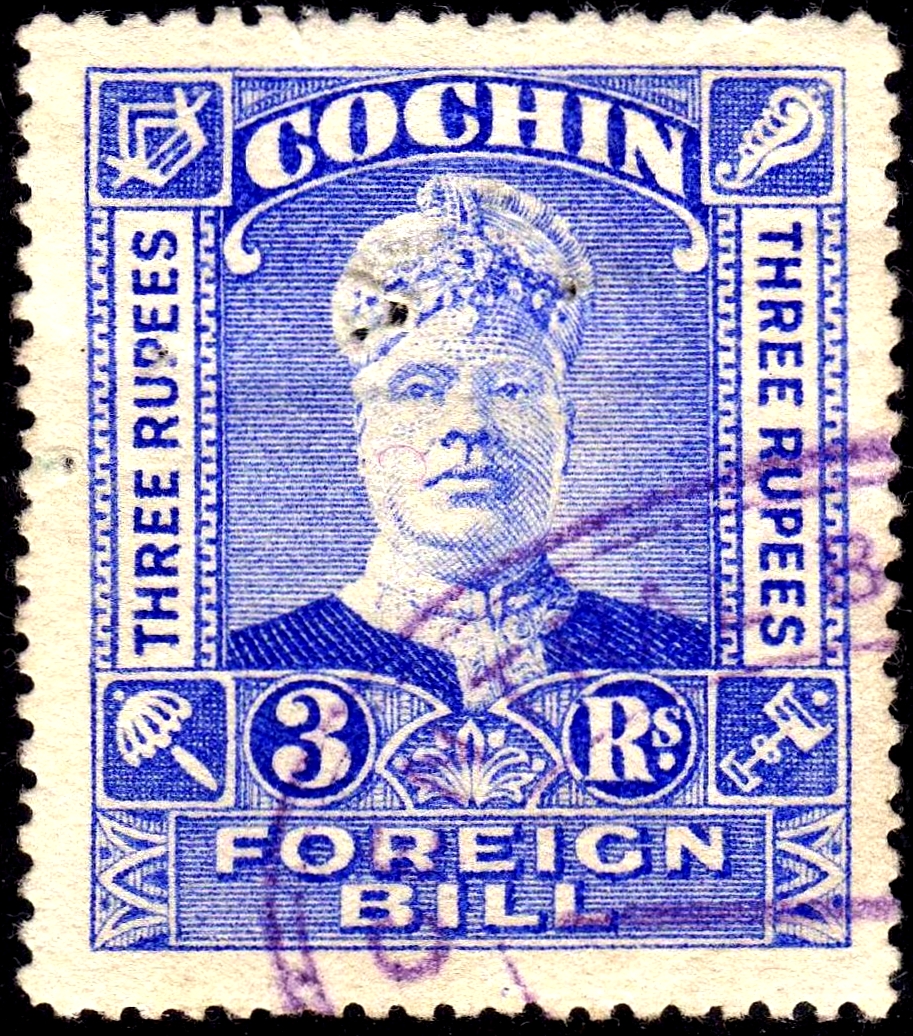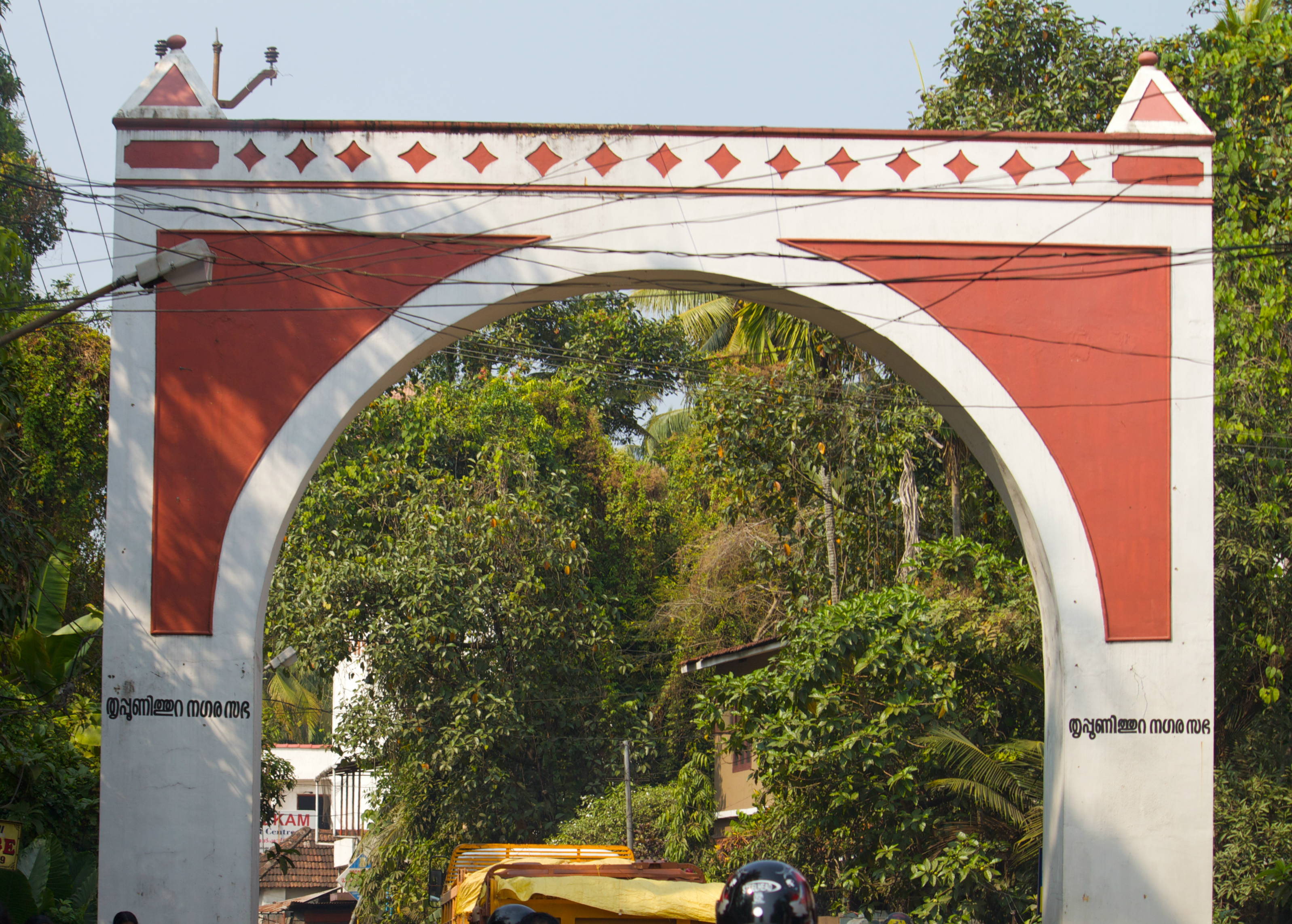|
Kerala Varma VI
Kerala Varma VI GCIE (c. 1863 – 13 October 1943) was the ruler of the Kingdom of Cochin from 23 May 1941 to 23 October 1943. Reign Kerala Varma ascended the throne on the death of Rama Varma XVII. He was a younger brother of Rama Varma XVI. He was famously known as Midukkan Thampuran and it was during his reign that food rationing system was introduced for first time in an Indian princely state. He was an Ayurvedic physician with great knowledge. Personal life The Maharajah fondly called ''Midukkan Thampuran'' and his wife Smt. Lakshmikutty Neithiyaramma founded the Radha Lakshmi Vilasam Academy of Music which has today become the RLV College of Music and Fine Arts, Tripunithura. He had four sons, Krishna Menon, Girijavallabhan Menon, Raghunandanan Menon and Sukamara Menon, and a daughter Radha. His fourth son, Sukumara Menon, who held a Captain's rank in the army married Bharathy Kutty, daughter of Marayil Nanu Menon. Death The Maharaja died at Thripunithura Thrippunit ... [...More Info...] [...Related Items...] OR: [Wikipedia] [Google] [Baidu] |
Order Of The Indian Empire
The Most Eminent Order of the Indian Empire is an order of chivalry founded by Queen Victoria on 1 January 1878. The Order includes members of three classes: #Knight Grand Commander (GCIE) #Knight Commander ( KCIE) #Companion ( CIE) No appointments have been made since 1947, the year that British India gained independence as the Union of India and Dominion of Pakistan. With the death of the last surviving knight, the Maharaja Meghrajji III of Dhrangadhra, the order became dormant in 2010. The motto of the Order is ''Imperatricis auspiciis'', (Latin for "Under the auspices of the Empress"), a reference to Queen Victoria, the first Empress of India. The Order is the junior British order of chivalry associated with the British Indian Empire; the senior one is The Most Exalted Order of the Star of India. History The British founded the Order in 1878 to reward British and native officials who served in British India. The Order originally had only one class (Companion), but exp ... [...More Info...] [...Related Items...] OR: [Wikipedia] [Google] [Baidu] |
Kingdom Of Cochin
The Kingdom of Cochin, named after its capital in the city of Kochi (Cochin), was a kingdom in the central part of present-day Kerala state. It commenced at the early part of the 12th century and continued to rule until 1949, when monarchy was abolished by the dominion of India. Historically, the capital of Cochin was in Kodungallur (Cranganore), but in 1341 the capital was moved to Cochin inorder to remedy a disastrous flood. By the early 15th century, Cochin lost its ability to fully defend itself. By the late 15th century, the Cochin kingdom shrank to its minimal extent as a result of invasions by the Zamorin of Calicut. When Portuguese armadas arrived in India, the Kingdom of Cochin had lost its vassals to the Zamorins, including Edapalli and Cranganore, the later of which had even been at the centre of the kingdom historically. Cochin was looking for an opportunity to preserve its independence, which was at risk. King Unni Goda Varma warmly welcomed Pedro Álvares Cabra ... [...More Info...] [...Related Items...] OR: [Wikipedia] [Google] [Baidu] |
Rama Varma XVII
Rama Varma XVII GCIE (c. 1861 – 23 May 1941) was the ruler of the Kingdom of Cochin from 25 March 1932 to 23 May 1941. Reign Rama Varma ascended the throne on the death of Rama Varma XVI. The Cochin Kochi (), also known as Cochin ( ) ( the official name until 1996) is a major port city on the Malabar Coast of India bordering the Laccadive Sea, which is a part of the Arabian Sea. It is part of the district of Ernakulam in the state of K ... harbour was expanded and the Ernakulam High Court was established during his reign. Rama Varma also showed keen interest in religious and spiritual matters. Death Rama Varma died at Chowwara on 23 May 1941. References * {{DEFAULTSORT:Varma, Rama, 17 Rulers of Cochin Knights Grand Commander of the Order of the Indian Empire 1861 births 1941 deaths ... [...More Info...] [...Related Items...] OR: [Wikipedia] [Google] [Baidu] |
Rama Varma XVI
Sir Sri Rama Varma XVI (1858 – 21 March 1932) was the ruler of the Kingdom of Cochin from 1915 to 1932. Reign Rama Varma XVI succeeded Rama Varma XV on his abdication in 1914. Rama Varma ruled from 25 January 1915 until his death on 21 March 1932. Legacy He is remembered as the king who had given the ''Thitooram'' (Royal white) to build a new church within the premises of the fort city of Thrissur. Basilica of Our Lady of Dolours known as the largest church in India, stand tall in Thrissur, showing the love of the king to Christians. Death Rama Varma died on 21 March 1932 in Madras Chennai (, ), formerly known as Madras ( the official name until 1996), is the capital city of Tamil Nadu, the southernmost Indian state. The largest city of the state in area and population, Chennai is located on the Coromandel Coast of th .... He was aged 74. As he died at Madras, he is known as 'Madrasil Theepetta Thamburan'. His death came two months after the death of his pred ... [...More Info...] [...Related Items...] OR: [Wikipedia] [Google] [Baidu] |
RLV College Of Music And Fine Arts
Radha Lakshmi Vilasam "RLV" College of Music and Fine Arts is an academic institution situated in Thripunithura, Kochi in the state of Kerala, India. It is affiliated to the Mahatma Gandhi University and offers graduate and postgraduate courses in music, performing arts and visual arts. The current principal is Prof. C.J Suseela History The college began in a single apartment belonging to the Cochin Royal family. The then King of Cochin, Kerala Varma Midukkan Thampuran and his wife Smt. Lakshmikutty Nethyaramma invited experts in stitching, kaikottikkali, and painting to impart learning to girls and elder ladies. This endeavor developed into an institution in the name of the King’s daughter Radha and wife Lakshmi and was named ‘Radha Lakshmi Vilasam Academy’ incorporating vocal music also. In 1956, the institution was brought under the control of the government of Kerala and was renamed as RLV Academy of Music and Fine Arts. Diploma and Post Diploma Courses in voc ... [...More Info...] [...Related Items...] OR: [Wikipedia] [Google] [Baidu] |
Thripunithura
Thrippunithura or Tripunithura (), is a prominent historical and residential region in the City of Kochi in Kerala, India. Located about 7 km (4 mi) from the city centre, Tripunithura was the capital of the erstwhile Kingdom of Cochin. The descendants of the Cochin royal family still live in the palaces here. The Hill Palace situated in Tripunithura was the palace of Maharaja of Cochin, the ruler of Kingdom of Cochin. Tripunithura is also well known for its historical cultures and worldwide famous because of Sree Poornathrayeesa Temple and the annual festival ''Vrishchikoltsawam'' that takes place at the temple. In local administration, it is a municipality named Tripunithura Municipality. In the state administrative structure, Tripunithura is part of the Ernakulam District in the state of Kerala. Etymology Some latter day Sanskrit enthusiasts describe the origin of the name to "pūrṇa vēda puri" — the town of Vedas in its entirety. Another possible origi ... [...More Info...] [...Related Items...] OR: [Wikipedia] [Google] [Baidu] |
Ravi Varma V
Maharaja Gangadahra Koviladhikarikal Sri Ravi Varma (1865–1946) was the Maharaja of Cochin, India in 1943–46. Ravi Varma was born on 29 November 1865, in Tripunithura, then part of British India. Maharaja Gangadahra Koviladhikarikal Sri Ravi Varma ruled Cochin from 1943 to 1946. He was the Elaya Raja (crown prince) until his brother Midukkan Thampuran died on 13 October 1943. He ascended the throne at the age of 78 years. Although his reign was short, he was very popular with the people of Cochin. He was known for his spirit of equality, and the way he got along with the common people despite the vast economic inequality prevailing in those times. A very well educated man for his time, he was fluent in English, Hindi, Malayalam, Sanskrit and to some extent Urdu. Maharaja Ravi Varma was admired for his painting skills and was very well versed in oil painting. Maharaja Ravi Varma was possibly also a famous player of Polo during his youth. Ravi Varma V was married to Kamakshi ... [...More Info...] [...Related Items...] OR: [Wikipedia] [Google] [Baidu] |
Rulers Of Cochin
A ruler, sometimes called a rule, line gauge, or scale, is a device used in geometry and technical drawing, as well as the engineering and construction industries, to measure distances or draw straight lines. Variants Rulers have long been made from different materials and in multiple sizes. Some are wooden. Plastics have also been used since they were invented; they can be molded with length markings instead of being scribed. Metal is used for more durable rulers for use in the workshop; sometimes a metal edge is embedded into a wooden desk ruler to preserve the edge when used for straight-line cutting. in length is useful for a ruler to be kept on a desk to help in drawing. Shorter rulers are convenient for keeping in a pocket. Longer rulers, e.g., , are necessary in some cases. Rigid wooden or plastic yardsticks, 1 yard long, and meter sticks, 1 meter long, are also used. Classically, long measuring rods were used for larger projects, now superseded by t ... [...More Info...] [...Related Items...] OR: [Wikipedia] [Google] [Baidu] |
Knights Grand Commander Of The Order Of The Indian Empire
A knight is a person granted an honorary title of knighthood by a head of state (including the Pope) or representative for service to the monarch, the church or the country, especially in a military capacity. Knighthood finds origins in the Greek ''hippeis'' and ''hoplite'' (ἱππεῖς) and Roman '' eques'' and ''centurion'' of classical antiquity. In the Early Middle Ages in Europe, knighthood was conferred upon mounted warriors. During the High Middle Ages, knighthood was considered a class of lower nobility. By the Late Middle Ages, the rank had become associated with the ideals of chivalry, a code of conduct for the perfect courtly Christian warrior. Often, a knight was a vassal who served as an elite fighter or a bodyguard for a lord, with payment in the form of land holdings. The lords trusted the knights, who were skilled in battle on horseback. Knighthood in the Middle Ages was closely linked with horsemanship (and especially the joust) from its origins in the 12 ... [...More Info...] [...Related Items...] OR: [Wikipedia] [Google] [Baidu] |
1863 Births
Events January–March * January 1 – Abraham Lincoln signs the Emancipation Proclamation during the third year of the American Civil War, making the abolition of slavery in the Confederate states an official war goal. It proclaims the freedom of 3.1 million of the nation's four million slaves and immediately frees 50,000 of them, with the rest freed as Union armies advance. * January 2 – Lucius Tar Painting Master Company (''Teerfarbenfabrik Meirter Lucius''), predecessor of Hoechst, as a worldwide chemical manufacturing brand, founded in a suburb of Frankfurt am Main, Germany. * January 4 – The New Apostolic Church, a Christian and chiliastic church, is established in Hamburg, Germany. * January 7 – In the Swiss canton of Ticino, the village of Bedretto is partly destroyed and 29 killed, by an avalanche. * January 8 ** The Yorkshire County Cricket Club is founded at the Adelphi Hotel, in Sheffield, England. ** American Civil War – ... [...More Info...] [...Related Items...] OR: [Wikipedia] [Google] [Baidu] |
.png)






